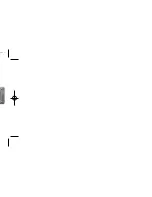
H O W T O U S E S L I D E R U L E B E Z E L
P A G E 1 9
Note: In order to maintain accuracy, you must keep mental track of the
decimal point. For example, 50 can equal 500, 50, 5, 0.5 and so on.
Calculating ratios:
Turning your outer ring so that the 60 lines up with the 60 on the
inner ring sets up a ratio of 1:1, you can see that 50 lines up with 50, 55 with 55, etc.
To calculate a ratio of 1:2 simply line up with the 30 on the outer ring with the 60 on
the inner ring. You now have ratios of 1:2, noticing that the numbers on the outer
ring are exactly half of the numbers on the inner ring.
Other uses:
Your aviator bezel can perform many other mathematical functions.
You can find square roots, tip percentages, currency conversions, once you have the
basics of how to use a circular slide rule, the practical applications are endless.
Multiplication:
Division:
Using the 10 on the inner as the base, you
can quickly multiply.
Example: 5x7
Line up 5 on the outer ring up with the 10
on the inner ring (remember, you’re actu-
ally using 50).
The number on the outer ring that lines up
with the 7 on the inner ring (70), is 35.
5x7=35
Your answer will be the number that lines
up with 10.
Example: 15÷5
Line up 15 on the outer ring up with the 5
on the inner ring (50).
Look at the 10 on the inner ring.
The number that lines up with it on the
outer ring is 30, representing 3.
15÷5=3






































